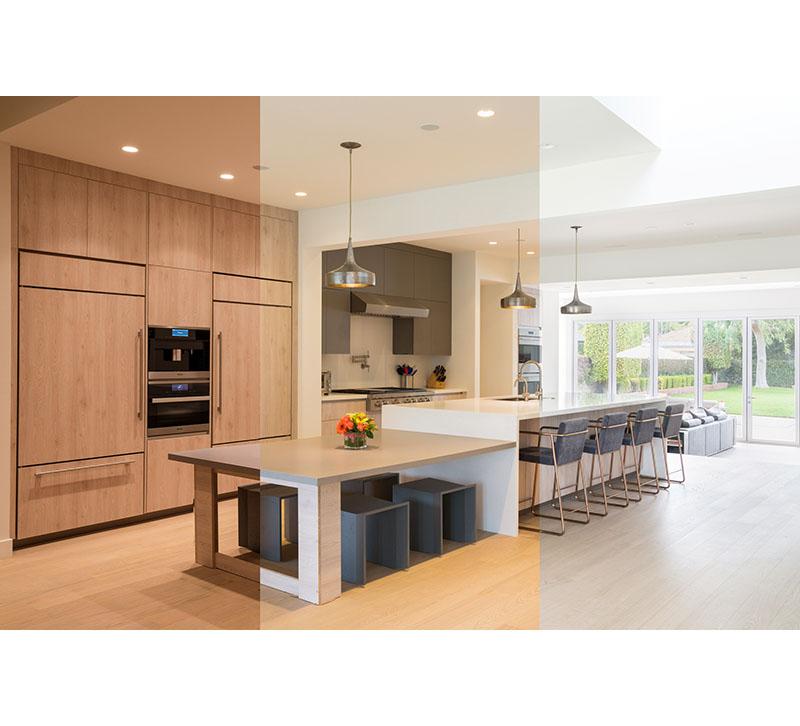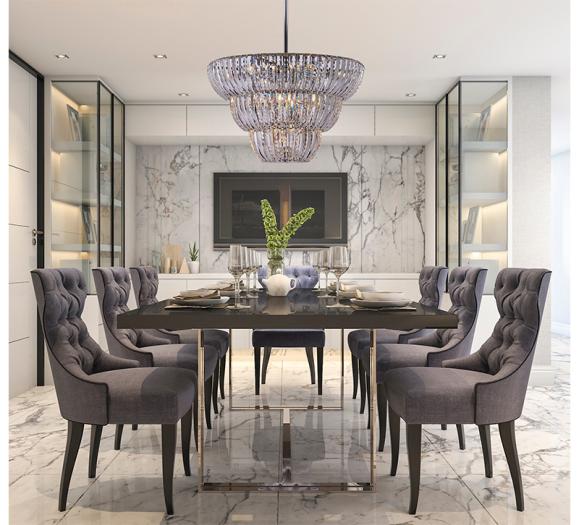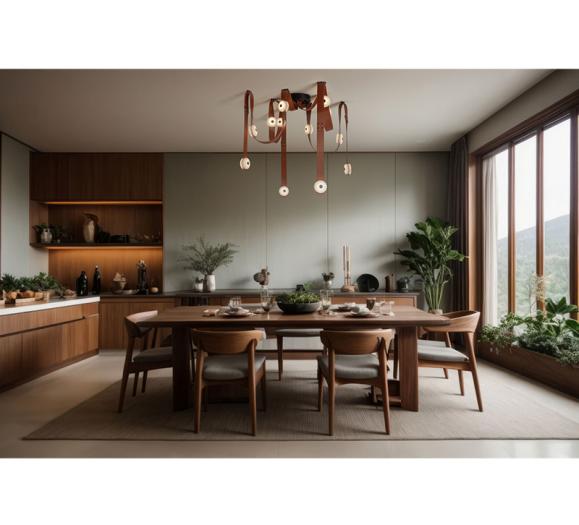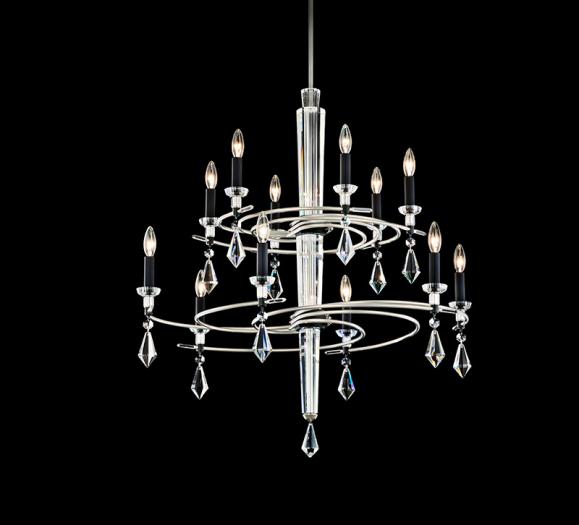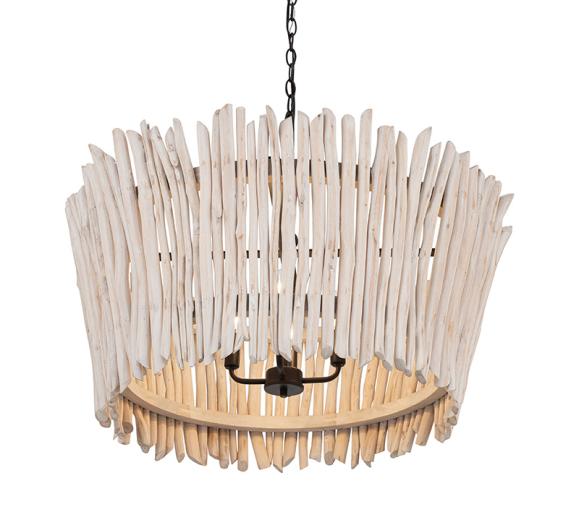Lutron Electronics, a leader in lighting, control and automated shading solutions, is announcing the results of its first-ever Lighting Trend Report. Informed by findings from a recent Lutron/Harris Poll survey* as well as leading designer insights and Lutron’s expertise, the report shares homeowners’ lighting preferences and forecasts anticipated trends for 2023 and beyond.
This first-of-its-kind report signals the growing demand for modern, high-quality lighting solutions, with 91% of U.S. homeowners reporting that quality lighting is important to their home design and 75% reporting that lighting is one of the most important design choices for their home according to the Lutron/Harris Poll survey. Findings within the report reveal the role of lighting in everything from supporting wellness and sleep routines, to creating ambiance, connecting to nature, incorporating sustainable design elements, informing home buying priorities, and more.
While we often think about the importance of furnishings and decor in establishing a look, light is a fundamental element in the design of a space. “Light brings atmosphere and can enhance not only the aesthetic of a home but how we look, feel, and live within it,” notes Cecilia Ramos, Lutron Senior Director. “With the launch of our first trend report, we’re excited to dig into first-hand consumer sentiments about what’s motivating the demand for innovative new lighting solutions – and to explore the shift in thinking about lighting as a utility to light as an amenity that can truly shape our experiences within the home.”
Here are some of the report’s key findings:
Bringing The Outside In - The Drive to Find Connection with Nature
82 percent of U.S. homeowners say that it’s important to have a connection to nature in their day-to-day lives — and an even higher 87 percent of U.S. homeowners think a connectedness to nature is important in their home design. This trend towards bringing the outdoors in has been on the rise in recent years, with homeowners embracing earth-inspired color tones and materials, but one of the most organic ways to support connection to nature within the home is through natural light - both sunlight, as well as the latest LED solutions that precisely mimic the changing color temperature and intensity of sunlight throughout the day, achieving a near-outdoor experience while indoors.
"For me, a home that ‘brings the outdoors in’ starts with light,” says Sasha Bikoff, Founder & CEO of Sasha Bikoff Interior Design. "I recently designed my own home in the Hamptons, creating a zen, nature-inspired space that started with floor-to-ceiling windows for beautiful views and access to sunlight. Ketra has been my secret weapon, as it can exactly mimic the sun throughout the day to make any space feel flooded with natural light. And when I want to dial it up a bit - whether brightening to energize my morning or playing with colors when entertaining friends - Ketra gives me the flexibility to match any mood."
The control of light through windows is critical as well, with 89 percent of U.S. homeowners reporting that window coverings that optimize views/access to nature (e.g., semi-transparent blinds) are important in creating a connection to nature in their home.
Americans are Designing their Homes as Relaxing Retreats
The vast majority of U.S. homeowners (90 percent) say that it’s important that their home help them relax and disconnect from work and/or the outside world, which can be especially challenging for the remote workforce who spend their days at home and have fewer boundaries between work and personal time. This mentality supports rising “resimercial” trends like spa-inspired bathrooms or resort-inspired backyards, as Americans look to replicate the inspiration and relaxation they’ve found at luxury hotels in their own homes.
For many, the key to relaxing at home is creating the right ambiance - and light has emerged as a core factor in doing so, with almost four in five U.S. homeowners (78 percent) saying the ability to adjust lighting is one of the most important factors to creating ambiance within a home.
“Part of what sparks inspiration when staying at resorts are the intangible design elements that come together to create a sense of ambiance - and for me, the key to creating that is often through light,” says Young Huh, Founder of Young Huh Interior Design. “When it comes to replicating that feeling in your own space, a tunable light source can make all the difference. Options like Ketra allow you to create custom settings - whether dimming to a warm glow to mimic candlelight or mirroring the sun’s movement to make any space feel flooded in sunlight. Without the right lighting, it’s easy for design details to get lost in translation - even a sunny yellow room can feel dreary if it’s not filled with light.”
Wellness Rises to the Top of the Wishlist
68 percent of U.S. homeowners wish they could integrate wellness into their home design in a bigger way. For those struggling to commit to their wellness goals, design elements like lighting can help “build” healthy habits into daily routines through tailored settings to support anything from an invigorating workout to a relaxing yoga session.
What’s more, a majority of U.S. homeowners (75 percent) say controlling light in their home is important to their sleep routine - acknowledging the impact of lighting and shades on one of the most important daily wellness habits, our sleep cycle.
“We’ve seen really creative wellness applications from our clients,” shares Cecilia Ramos, Lutron Senior Director. “For example, our lighting controls - the keypads on the walls — have the ability to be customized with settings that describe the desired activity within the space. We've seen bathrooms feature custom engravings for "Spa Day" and "Bubbles," and home gyms with keypads for "Warm Up" and "Beast Mode."
Across the board, there’s increasing awareness about personalized lighting scenes and how they motivate and support certain activities within the home. And for everyday homeowners, something as simple as Ketra’s Natural Light routine organically adjusts the lighting to the perfect setting to match the time of day, waking us up in the morning and putting us to sleep at night.”
Glow Up - Demand for Better Closet & Bathroom Lighting
Even though the majority of homeowners say lighting is one of the most important design choices in their space, nearly one in five (19 percent) of U.S. homeowners are not happy with the lighting in the rooms of their home that they get ready for the day in.
For luxury homes in particular, “glam rooms” have become a popular trend as a growing number of Lutron clientele and other homeowners take walk-in closets to the next level with entire rooms dedicated to their morning beauty routines. More than 4 in 5 U.S. homeowners (84 percent) believe that bad lighting in a closet, dressing room, or bathroom can make getting ready a more unpleasant process. This insight supports the idea that homeowners see a connection between light and their self-perceptions of beauty and style, and that the routine activity of choosing clothes and making oneself presentable is positively impacted by a well-lit space.
Lighting Emerges as a Must-Have for Home Buyers
About three quarters of U.S. homeowners (74 percent) would not purchase a new home without “good natural light” even if it checked the other boxes on their home search - making lighting one of the most important considerations for buyers and investments for current homeowners.
When it comes to rooms/areas in a home that U.S. homeowners feel are among the most important to invest in high-quality lighting, the kitchen (72 percent) and living/family room (69 percent) are at the top of the list. See below for a break-out of which rooms U.S. homeowners believe investing in high-quality lighting is integral for, ranked by priority:
● Kitchen - 72 percent
● Living / family room - 69 percent
● Bathrooms - 61 percent
● Bedrooms - 56 percent
● Home office – 41 percent
● Entryways – 32 percent
● Closets – 32 percent
● Basement – 24 percent
● Home theater – 18 percent
● Other – 3 percent
“Beyond natural light sources like windows, ‘good light’ comes down to the interplay between light and dark, which can help provide depth and let homeowners notice the feel of a room,” says Nathan Orsman, Founder & Principal of Orsman Design. “While I often see people choose lighting fixtures because of how they look within a space, the best lighting solutions will help draw your eye to focal points in the room and can create subtle contrast to keep spaces from feeling flat and boring. For me, the key is high-quality, tunable sources like Ketra that allow you to customize lighting for any need – and you can really pick any room(s) where you spend most of your time as a starting point when first exploring lighting design and upgrade from there.”
Reduce, Reuse, Restore - Homeowners Are Prioritizing Eco-Friendly Design Choices
More than four in five U.S. homeowners (81 percent) want to reduce their impact on the environment - and homeowners are willing to invest in eco-friendly options to do so, with 76 percent of U.S. homeowners confirming they would prioritize purchasing products for their home design that help reduce their impact on the environment.
With proper smart and automated lighting, a home can be optimized to save energy and reduce waste. On average, LED light bulbs last 50 times longer than a typical incandescent light and use at least 75 percent less energy, according to the U.S. Department of Energy. Beyond the sustainable benefits of automation, thoughtfully programmed lighting can also elevate homeowners’ routines to make their days more convenient and comfortable. So it should come as no surprise that nearly four in five U.S. homeowners (78 percent) would invest in LED lighting or automated shades to help limit their carbon footprint.
*This survey was conducted online within the United States by The Harris Poll on behalf of Lutron from March 2-6, 2023 among 1,543 U.S. homeowners ages 18 and older. The sampling precision of Harris online polls is measured by using a Bayesian credible interval. For this study, the sample data is accurate to within +/- 3 percentage points using a 95% confidence level. For complete survey methodology, including weighting variables and subgroup sample sizes, please contact Lutron@sharpthink.com



